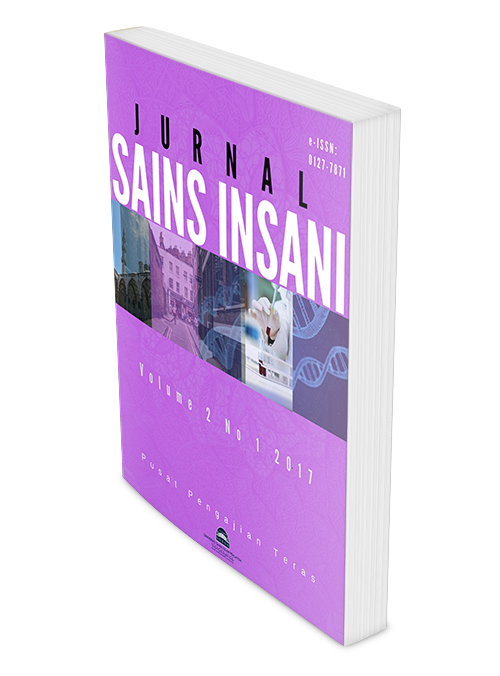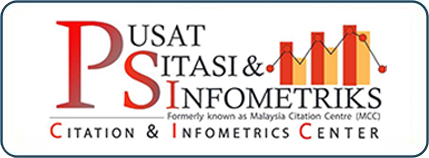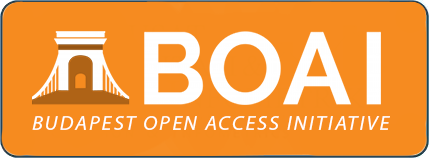Exploring the Level of Understanding the Content of Quran among Diverse Groups of People
DOI:
https://doi.org/10.33102/sainsinsani.vol2no1.52Abstract
The Quran, the holy scripture of Islam, is the most comprehensive source of reference for humankind to understand the teachings of Islam. Undeniably, understanding the Quran is a principal and an important aspect in the life of an individual Muslim regardless of their differences. In reality, understanding the teaching of the Quran and applying it in life can make a servant of Allah s.w.t succeed in all aspects of his life. In order to ensure accurate and correct application of the teachings of the Quran among Muslims, it is important that their level of understanding is investigated first. This will ensure guidance can be provided accordingly and appropriately. This conceptual paper compiles four levels of understanding the Quran among diverse groups of people, which are Naïve, Novice, Intermediate, and Expert.
Keywords: Religion, Quran, People Understanding, Social Stratification, Holy Books
Downloads
References
Arredondo, P. (2004). Organizational Assessments for Planning Diversity Initiatives. Arizona State University.
Bhanji, S. M. (2014). Towards better Understanding of The Quran. Tabligh Centre of KSI Jamat. Retrieved from Al-Islam.org: https://www.al-islam.org/towards-better-
understanding-quran-shaykh-muslim-bhanji/quran-describes-itself
Brian, J. G., & Mehtab, S. K. (2010). The Future of the Global Muslim Population Projections for 2010-2030. Washington D.C: Pew Research Center’s Forum.
Che Noh, M., Hussein, A., Ghani, O., & Suhid, A. (2013). The Study of Quranic Teaching and Learning: A Review in Malaysia and United Kingdom. Middle-East Journal of
Scientific Research 15.
Gardenswartz, L., & Rowe, A. (2008). Diverse Teams at Work Capitalizing on the Power of Diversity. Alexandria, Virginia: Society for Human Resource Management.
Hasli, A. (2016, Februari 20). Sinar Online. Retrieved from Sinar Online: http://www.sinarharian.com.my/ultras/liga-malaysia/ramai-umat-islam-tidak-memahami-al-quran-
1.487473
Ibnu Qayyim, A.-J. (1996). Madarij Al-SÉlikin Baina ManÉzil IyyÉka NaÑbudu WÉ IyyÉka NastaÑin. ạbn fym ạljwryẗ.
Ikhwanuddin, M., & C. H. (2014). Relationship between Memorization Technique, Mastery of the Arabic Language and Understanding of the Qur’an. IIUM JOURNAL OF
EDUCATIONAL STUDIES, 1-14.
Ksar, J. ʿ. (2008). Fahm Alqurạn Drạsẗ ʿly̱ ḍwʾ Almdrsẗ Alslwkyẗ. Mrkz ạlḥḍạrẗ ltnmyẗ ạlfkry ạlạslạmyẗ.
Mat Saad, S. (2015, November 24). Sinar Online. (Sinar Karangkraf Sdn Bhd) Retrieved 9 25, 2016, from Sinar Online: http://www.sinarharian.com.my/ultras/liga-malaysia/al-
quran-bukan-sekadar-untuk-dibaca-1.454986
Mazur, B. (2010). Cultural Diversity in Organisational Theory and Practice. Journal of Intercultural Management, 5.
Nawawi, I. (2012). Riyadus Solihin. Batu Caves: PTS Media Group Sdn Bhd.
Omar, A. L. (2016). AL FATHUN NAWA. Bandar Baru Selayang: Hafizul Publication.
Rijamampianina, R., & Carmichael, T. (2005). A Pragmatic and Holistic Approach to Managing Diversity. Problems and Perspectives in Management.
Todd, M. J., Gina, A. Z., Albert, W. H., & Peter, F. (2015). Christianity 2015: Religious Diversity and Personal Contact. Massachusetts: International Bulletin of Missionary
Research.
Wan Kamarudin, W. (2015). Kajian Kes Perbezaan Jantina Dalam Pembentukan Sahsiah Muslim. Academia Journal UiTMT, 22-23.
Zaid, W. A. (2016, 4 10). Ifaquh Syariah. Retrieved from Alukah: http://www.alukah.net/sharia/0/101456/#ixzz472maBDvW
Zakaria, R., Fuad, Z., & Rasdi, M. N. (2014). Imlikasi Tadabbur Al-Quran dalam Pembentukan Insan yang Berkualiti di Sudut Akhlak. International Conference on Postgraduate
Research 2014 (ICPR 2014), 1.
Zarabozo, J. a.-D. (1999). How to Approach and Understand the Quran. Boulder, CO 80301. U.S.A: Al-Basheer Company for Publications and Translations.
Downloads
Published
How to Cite
Issue
Section
License
1. Author holds the copyright of the article.
2. Jurnal Sains Insani owns the rights to publish the article. The writer may request permission to republish the article from the editor.
3. Jurnal Sains Insani follows the APA (American Psychological Association) style for all in-text citation and list of bibliographies.











